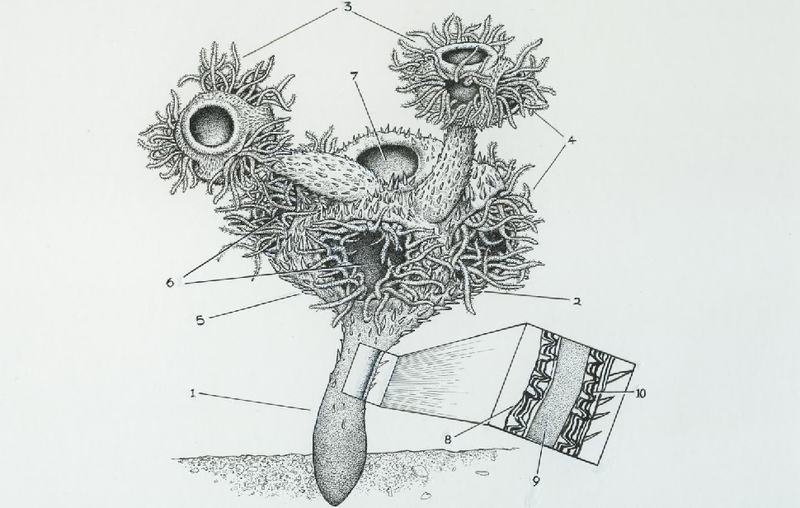
It’s easy to get excited about new fossil discoveries, but sometimes a second look at an old find can reveal something just as surprising.
For example, geoscientist Rachel Wood of the University of Edinburgh and her colleagues recently re-examined specimens of a tiny, 550 million-year-old marine organism called Namacalathus hermanastes, and they found that complex skeletons had evolved millions of years earlier than we previously knew.
The tiny, goblet-shaped N. hermanastes isn’t a newly discovered species. It was discovered in 2000, and has been found at sites in Namibia, Siberia, Oman, and British Columbia. For the last 15 years, most scientists had assumed that it was a very primitive organism, similar to sponges and coral. Upon closer inspection, however, N. hermanastes turned out to be more complex than anyone expected.
Cambrian Explosion
Most of the major groups in the animal kingdom we know today first appeared in the fossil record around 540 million years ago, which geologists consider the beginning of the Cambrian Period. It’s likely that the ancestors of these groups already existed, but since the fossil record depends mostly on skeletons being preserved in sediment that later becomes rock, the ancestors of today’s animals couldn’t really leave their mark on the fossil record until they evolved hard skeletons. And about 540 million years ago, that’s exactly what they did.
Those early skeletons were pretty simple. Marine organisms could absorb chemicals from the surrounding water, and then secrete a calcium carbonate shell around their softer tissues. That ability offers an obvious advantage in terms of protection from predators, and scientists say that’s probably why it caught on.
Some animals had evolved the trick of building skeletons for themselves before the Cambrian period, such as sponges and corals, but these are some of the most primitive animals on Earth; their body structures are very simple, and they haven’t changed much since pre-Cambrian times. These primitive organisms aren’t believed to be the ancestor of any of today’s more complex species.
And until recently, scientists thought about N. hermanastes was more closely related to sponges: a primitive organism, unrelated to today’s more complex marine life.
More than Meets the Eye
When Wood and her colleagues took a closer look at some especially well-preserved specimens, however, they discovered that its calcium carbonate skeleton was more complex than those of sponges or coral, and in fact resembled those of today’s mollusks and other marine organisms that live at the bottom of the ocean.
They also found that the tiny goblet-shaped animal shows early signs of bilateral symmetry, meaning that its body can be divided into left and right halves. Animals with bilateral symmetry are usually more complex than animals like sponges, which have no symmetry at all, or animals like the sea anemone, which have radial symmetry. Until recently, most scientists were fairly sure that the ancestors of today’s modern animals didn’t evolve bilateral symmetry until the Cambrian Period.
“This fossil has been known for a long time, and was assumed to have been a primitive animal, such as a sponge or coral. This study suggests that it was, in fact, more advanced. We have suspected that these complex animals were present in the Ediacaran, but this study provides the first proof,” said Wood in a press release. Her team published its results in the journal Proceedings of the Royal Society B.
Wood and her colleagues say that N. hermanastes may be more closely related to today’s brachiopods (marine animals with hard shells that usually attach themselves to rocks or sediment on the seafloor) and bryozoans (tiny marine animals that form colonies and encrust rocks or the hulls of boats). That means that the complex skeletons of today’s animals started evolving about 10 million years before the beginning of the Cambrian period, much earlier than scientists previously thought.
[University of Edinburgh, Proceedings of the Royal Society B]
Top image: J. Sibbick
Contact the author at k.smithstrickland@gmail.com or follow her on Twitter.

















